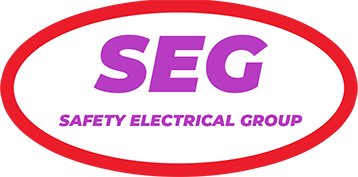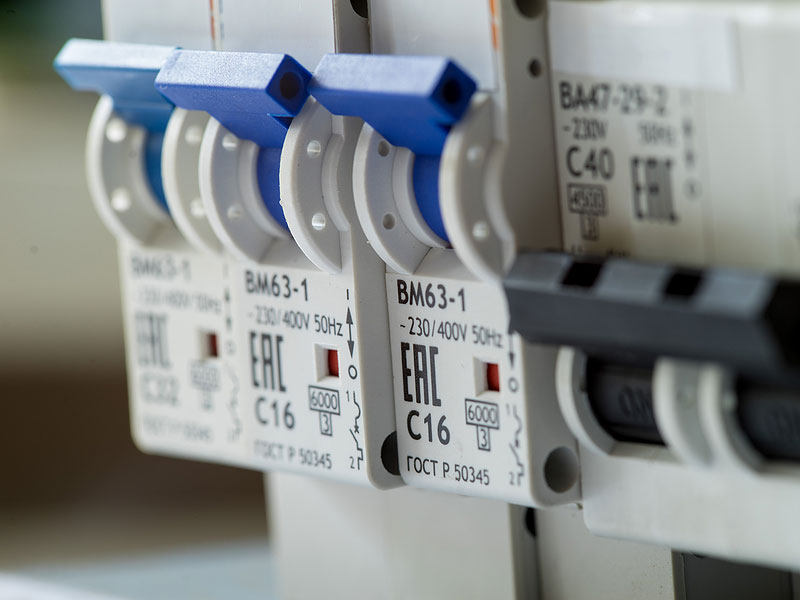Indoors
A good place to start is to make sure you have safety switches installed. The safety switches will alert you to possible problems with the wiring or electric appliances in your home or property. If you need to have these installed, or you need to have a fuse replaced or reset, call a qualified electrician.
Make sure your electric appliances are in good working order. For example, if an electrical appliance is continually tripping a safety switch, it’s time to replace the appliance.
If you feel a shock or a tingle from an electric appliance, you should turn it off immediately and have it fixed by a registered electrical tradesman. It’s the same for the cords on your appliances – if they are frayed or damaged, you either need to replace the appliance or make sure it’s fixed by a qualified repairer.
The same applies if you feel any shock or tingling when touching a metal surface, such as a sink. It could mean you have a wiring problem in your home that needs to be fixed.
Other simple safety measures include:
- put children’s safety plugs on powerpoints
- turning off a toaster at the powerpoint before trying to remove stuck toast
- never touch electric appliances or switches with wet hands or feet
- avoid using adaptors and powerboards
- place extension leads along a wall – never under a rug where it will build up heat
- turn powerpoints off before inserting or removing a plug
- electric blankets: check all cords, don’t piggyback on power boards and when storing – roll don’t fold. Folding can damage heating elements
- electric heaters: don’t dry your clothes on an electric heater, water and electricity don’t mix! Don’t leave electric heaters in places where they can be knocked over and make sure heaters are turned off before you go to bed or when you leave the room
Safety Switches
Safety switches work by monitoring the flow of electricity through a circuit and detecting problems as soon as the current leaves the circuit. If a problem is detected a safety switch will shut off the electricity in 0.03 seconds – quick enough to save a life or prevent costly damage.
In Qld it is mandatory to install safety switches in new premises and premises where major renovations occur.
- Switchboard mounted safety switches
Switchboard mounted safety switches provide efficient protection for your entire home. They are installed by registered electricians in the same location as your meters and circuit breakers or fuses.
- Power outlet safety switches
Power outlet safety switches are designed to protect a single circuit in a particular part of your home. For maximum protection, a power outlet safety switch must be installed by a registered electrician on the first power point of each circuit after the switchboard.
- Plug-in safety switches
Plug-in safety switches are portable so they can be used outside or in areas where electricity is not usually used. Farmers often use Plug-in safety switches. They plug directly into a power outlet, providing protection at a power extension and they only protect the appliance plugged into them. Portable safety switches are available from major hardware stores.
Outdoors
Electricity is all around us, so we need to be aware and take all necessary care to avoid injury.
For example, if powerlines fall or sag, you need to keep your distance. That’s because fallen powerlines may still be active, even when they’re touching the ground. If a powerline falls on your car while you’re in it, it’s safer for you to stay in the car and call for emergency services. Of course, if your car catches fire, you need to get out and the safest way is to jump clear and land on both feet, avoiding any metal on the car as you jump.
Always be aware of powerlines – flying kites and model planes, raising caravan antennas, and so on.
When working with electrical equipment outside, only use equipment made for this purpose, such as a whipper-snipper or lawn mower. Also make sure your electrical cords are in good condition – if there’s any damage, you either need to get rid of them or have a licensed repairer fix them.
Never connect a piggyback plug or ordinary plug to the end of an extension lead to make it longer, because the pins will be live. This has caused deaths.
For home maintenance, wear proper footwear (sandals and thongs are not suitable), and be very careful when raising a ladder – keep it well away from powerlines and electricity and make sure the ladder has rubber feet touching the ground.
Finally, take extra care around a swimming pool as large volumes of water, wet bodies and bare feet means electric shock near a pool can be lethal.


